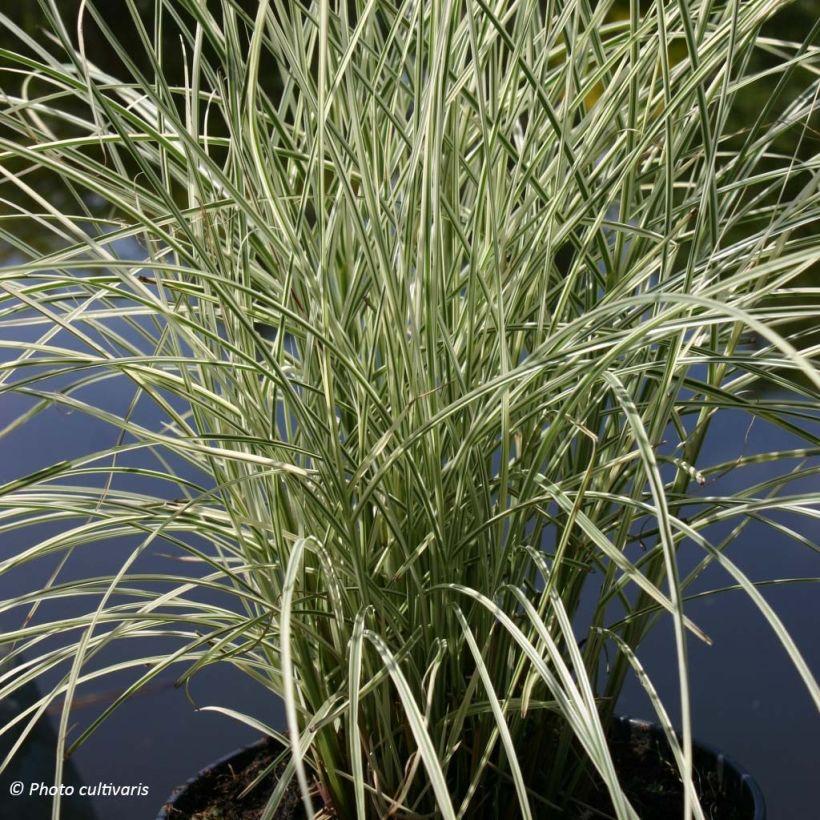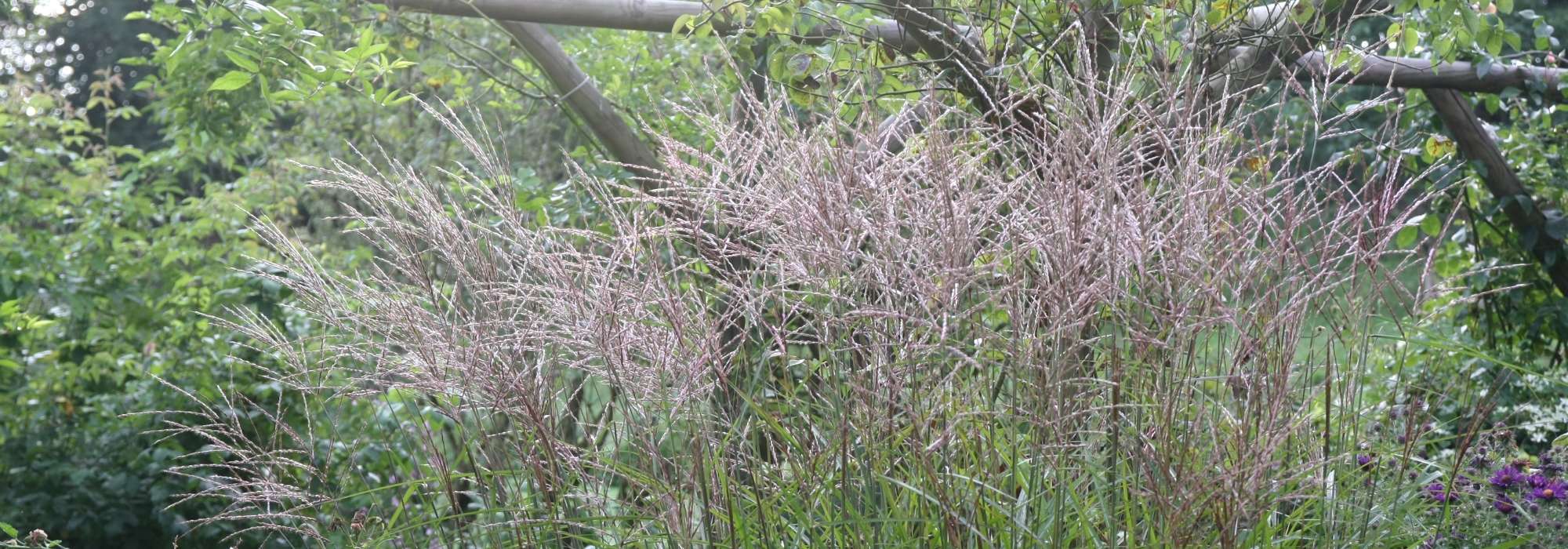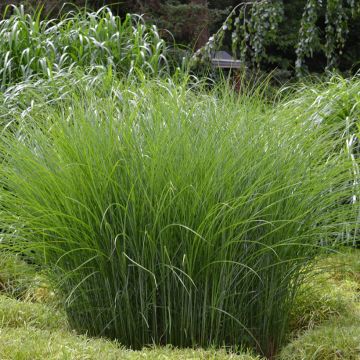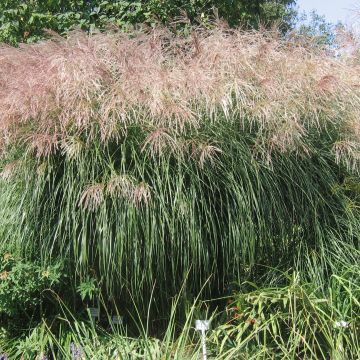

Miscanthus sinensis Morning Bright - Silvergrass


Miscanthus sinensis Morning Bright - Silvergrass


Miscanthus sinensis Morning Bright ('Mobri') - Roseau de Chine
Miscanthus sinensis Morning Bright - Silvergrass
Miscanthus sinensis Morning Bright ('Mobri')
Eulalia, Porcupine Grass, Chinese silver Grass, Maiden Grass, Zebra Grass, Susuki Grass
Special offer!
Receive a €20 voucher for any order over €90 (excluding delivery costs, credit notes, and plastic-free options)!
1- Add your favorite plants to your cart.
2- Once you have reached €90, confirm your order (you can even choose the delivery date!).
3- As soon as your order is shipped, you will receive an email containing your voucher code, valid for 3 months (90 days).
Your voucher is unique and can only be used once, for any order with a minimum value of €20, excluding delivery costs.
Can be combined with other current offers, non-divisible and non-refundable.
Home or relay delivery (depending on size and destination)
Schedule delivery date,
and select date in basket
This plant carries a 12 months recovery warranty
More information
We guarantee the quality of our plants for a full growing cycle, and will replace at our expense any plant that fails to recover under normal climatic and planting conditions.
Would this plant suit my garden?
Set up your Plantfit profile →
Description
Miscanthus sinensis Morning Bright 'Mobri' is a new and fascinating variety of Chinese reed. This tall grass unfolds like a graceful fountain, with long, very thin leaves that are strongly striated and variegated with white, giving it a somewhat unreal silver appearance, especially when the wind creates waves. Its late summer flowering, initially silver-pink, fades to white at maturity and remains decorative on the plant for a long time. The eulalia is not invasive. Its inflorescences are perfect for dried bouquets. It is truly easy to grow in any ordinary soil that is not too dry, in a very sunny location.
It belongs to the large Poaceae family. It is a recent German horticultural selection, derived from Miscanthus sinensis, a plant native to extreme eastern Asia and Oceania. This grass with short rhizomes develops in a non-trailing clump. It is tufted and its growth is moderately slow during the first two years. The habit is both erect and trailing, reaching 1.4m (5ft) in height, with a spread of 70cm (28in). The leaves are particularly thin, very long, and flexible, with a green-grey colour veined with white. They are widely bordered with white along their entire length, giving the foliage a white-silver look. Long floral stems emerge from the foliage in August-September and persist on the culms until November, in the form of silky digitate spikes 20cm (8in) long. They are tinted pink with white. As they fade, they take on a silvery hue.
It is a fabulous plant for borders, with a stunning effect. The white-green variegation is visible up close, but when you step back, the delicate, constantly moving foliage casts a soft silver-grey light. This sculptural grass can be used in a wild border, to divide a garden or in contrast with varied geometric shapes in a modern, minimalist garden. Miscanthus pairs well with perennials such as daylilies, tall asters, dahlias, giant sunflowers, and bamboo or ferns if the soil remains moist in summer.
Some varieties of miscanthus are currently being studied, as they offer real prospects for the creation of standing crop or fibre panels. These plants have several advantages: they do not deplete the soil, tolerate polluted soils well, and can be incinerated or even used to produce biofuel.
Miscanthus sinensis Morning Bright - Silvergrass in pictures




Flowering
Foliage
Plant habit
Botanical data
Miscanthus
sinensis
Morning Bright ('Mobri')
Poaceae
Eulalia, Porcupine Grass, Chinese silver Grass, Maiden Grass, Zebra Grass, Susuki Grass
Cultivar or hybrid
Other Miscanthus
View all →Planting and care
It appreciates good sunlight. It can withstand temporary drought once well established. Place it in fairly rich soil, even though it can tolerate poorer soils. It will look more spectacular when grown in moist but well-drained soil. It is easy to cultivate. Protect it from excessive winter humidity as it cannot tolerate stagnant water, which causes the roots to rot. Water abundantly after planting. Then, provide regular watering during the first year. Miscanthus is a hungry plant. It requires regular fertilisation. In late winter (March to April), cut the plant back to ground level before new leaves appear to maintain a compact habit. It produces new leaves from April onwards. Wear gloves as the leaves are sharp. It is a disease-resistant plant. Only a few rodents can disturb it.
Planting period
Intended location
Care
Planting & care advice
This item has not been reviewed yet - be the first to leave a review about it.
Similar products
Haven't found what you were looking for?
Hardiness is the lowest winter temperature a plant can endure without suffering serious damage or even dying. However, hardiness is affected by location (a sheltered area, such as a patio), protection (winter cover) and soil type (hardiness is improved by well-drained soil).

Photo Sharing Terms & Conditions
In order to encourage gardeners to interact and share their experiences, Promesse de fleurs offers various media enabling content to be uploaded onto its Site - in particular via the ‘Photo sharing’ module.
The User agrees to refrain from:
- Posting any content that is illegal, prejudicial, insulting, racist, inciteful to hatred, revisionist, contrary to public decency, that infringes on privacy or on the privacy rights of third parties, in particular the publicity rights of persons and goods, intellectual property rights, or the right to privacy.
- Submitting content on behalf of a third party;
- Impersonate the identity of a third party and/or publish any personal information about a third party;
In general, the User undertakes to refrain from any unethical behaviour.
All Content (in particular text, comments, files, images, photos, videos, creative works, etc.), which may be subject to property or intellectual property rights, image or other private rights, shall remain the property of the User, subject to the limited rights granted by the terms of the licence granted by Promesse de fleurs as stated below. Users are at liberty to publish or not to publish such Content on the Site, notably via the ‘Photo Sharing’ facility, and accept that this Content shall be made public and freely accessible, notably on the Internet.
Users further acknowledge, undertake to have ,and guarantee that they hold all necessary rights and permissions to publish such material on the Site, in particular with regard to the legislation in force pertaining to any privacy, property, intellectual property, image, or contractual rights, or rights of any other nature. By publishing such Content on the Site, Users acknowledge accepting full liability as publishers of the Content within the meaning of the law, and grant Promesse de fleurs, free of charge, an inclusive, worldwide licence for the said Content for the entire duration of its publication, including all reproduction, representation, up/downloading, displaying, performing, transmission, and storage rights.
Users also grant permission for their name to be linked to the Content and accept that this link may not always be made available.
By engaging in posting material, Users consent to their Content becoming automatically accessible on the Internet, in particular on other sites and/or blogs and/or web pages of the Promesse de fleurs site, including in particular social pages and the Promesse de fleurs catalogue.
Users may secure the removal of entrusted content free of charge by issuing a simple request via our contact form.
The flowering period indicated on our website applies to countries and regions located in USDA zone 8 (France, the United Kingdom, Ireland, the Netherlands, etc.)
It will vary according to where you live:
- In zones 9 to 10 (Italy, Spain, Greece, etc.), flowering will occur about 2 to 4 weeks earlier.
- In zones 6 to 7 (Germany, Poland, Slovenia, and lower mountainous regions), flowering will be delayed by 2 to 3 weeks.
- In zone 5 (Central Europe, Scandinavia), blooming will be delayed by 3 to 5 weeks.
In temperate climates, pruning of spring-flowering shrubs (forsythia, spireas, etc.) should be done just after flowering.
Pruning of summer-flowering shrubs (Indian Lilac, Perovskia, etc.) can be done in winter or spring.
In cold regions as well as with frost-sensitive plants, avoid pruning too early when severe frosts may still occur.
The planting period indicated on our website applies to countries and regions located in USDA zone 8 (France, United Kingdom, Ireland, Netherlands).
It will vary according to where you live:
- In Mediterranean zones (Marseille, Madrid, Milan, etc.), autumn and winter are the best planting periods.
- In continental zones (Strasbourg, Munich, Vienna, etc.), delay planting by 2 to 3 weeks in spring and bring it forward by 2 to 4 weeks in autumn.
- In mountainous regions (the Alps, Pyrenees, Carpathians, etc.), it is best to plant in late spring (May-June) or late summer (August-September).
The harvesting period indicated on our website applies to countries and regions in USDA zone 8 (France, England, Ireland, the Netherlands).
In colder areas (Scandinavia, Poland, Austria...) fruit and vegetable harvests are likely to be delayed by 3-4 weeks.
In warmer areas (Italy, Spain, Greece, etc.), harvesting will probably take place earlier, depending on weather conditions.
The sowing periods indicated on our website apply to countries and regions within USDA Zone 8 (France, UK, Ireland, Netherlands).
In colder areas (Scandinavia, Poland, Austria...), delay any outdoor sowing by 3-4 weeks, or sow under glass.
In warmer climes (Italy, Spain, Greece, etc.), bring outdoor sowing forward by a few weeks.




























































